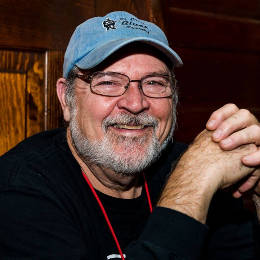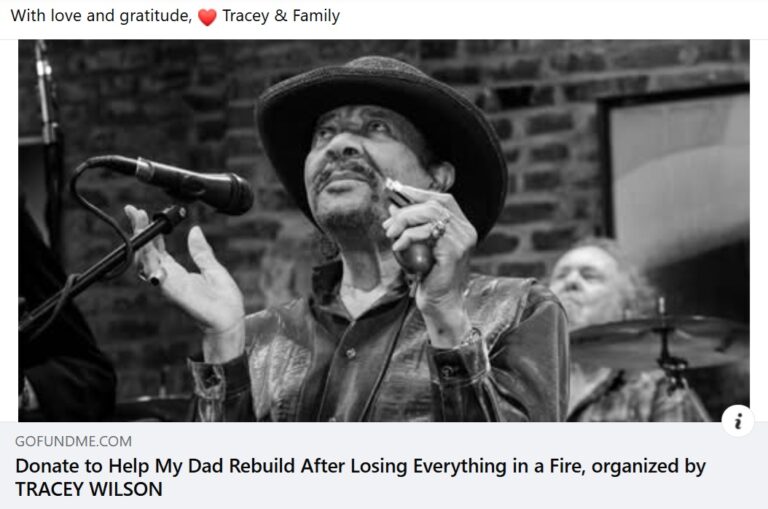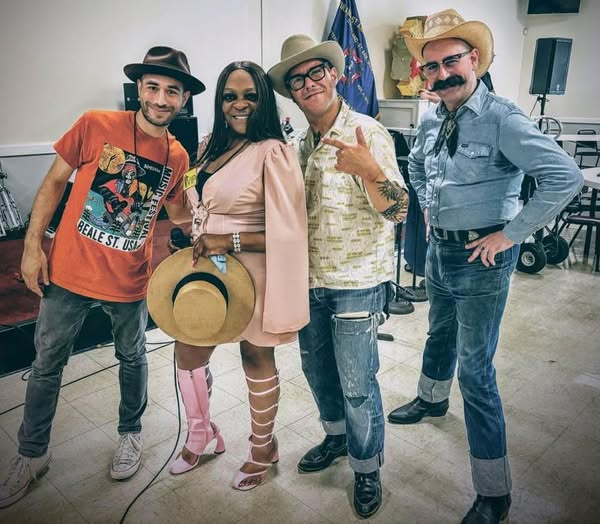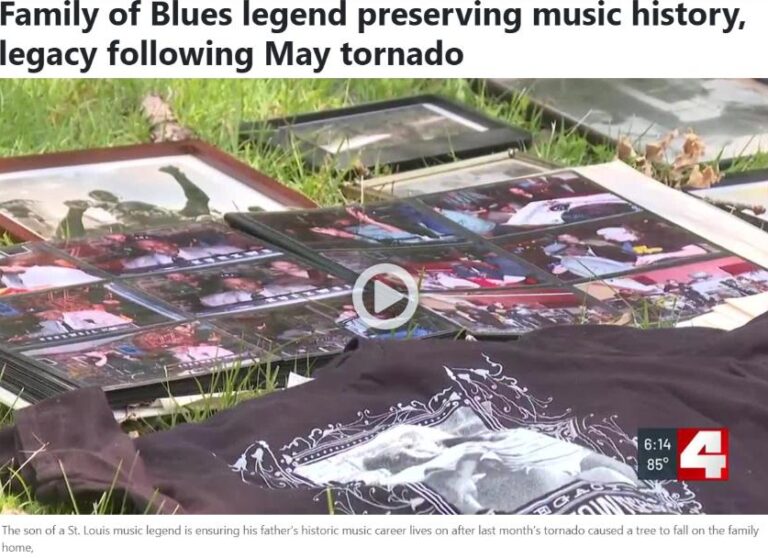By music journalist Bob Baugh
Glenn Changar
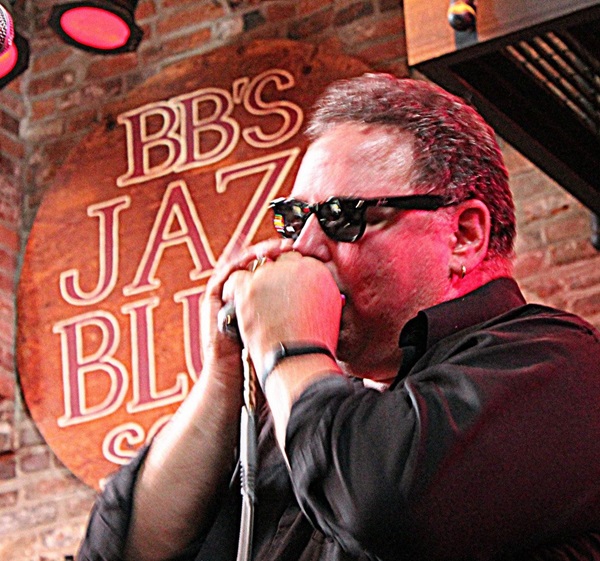
While stationed in Ft. Bragg NC in 1974 Glenn Changer used the last five bucks from a month’s pay to buy a harmonica. He wanted to play cross harp blues. The Rolling Stones and Led Zeppelin led him to the blues but it was Library of Congress Records that took him to the roots.
Changer says “I was lucky to be living in the Piedmont region where all of this music was so accessible.” Little Walter, Sonny Terry and James Cotton became part of his education. By 1980 he was at Truman State playing with “Low Guys” a blues rock band and starting his own, “The Glenn Changer Band,” that was more country. “You gotta be diverse to play,” he says.
By the mid 80’s Changer was in St. Louis where John May hooked him up with the “Mojo Tooth Band.” His Hohner Golden Melodies then migrated to the “The Blues-O-Matics” and finally “Patti and the Hitmen” where his west coast jump/Piedmont blues style has resided for the past 25 years. He loves the harp’s emotion and “that in your face ballsy hard punching harmonica tone…that’s me.”
Glenn’s highlights include opening for the Fabulous Thunderbirds, Marcia Ball and Kim Wilson. He brags on his peers Jim McClaren, Eric McSpadden and Jon Erblich and the St. Louis fat tone sound saying, “the competition is all about tone here.” He also recognizes players like Magic Dick (J Geils Band) and John Popper (Blues Traveler) who have helped popularize the harp with younger audiences.
The musical excellence of the STL blues community continues to impress Glenn as does “its remarkable kindness in looking out for each other.” He also wants the world to know that “our harp players are as good as anywhere but have never gotten the recognition of Chicago or West Coast players.”
To hear Glenn check the Patti and the Hitmen Facebook page for upcoming shows at 1860 Saloon or Johnny’s in Soulard and the Broadway Oyster Bar.
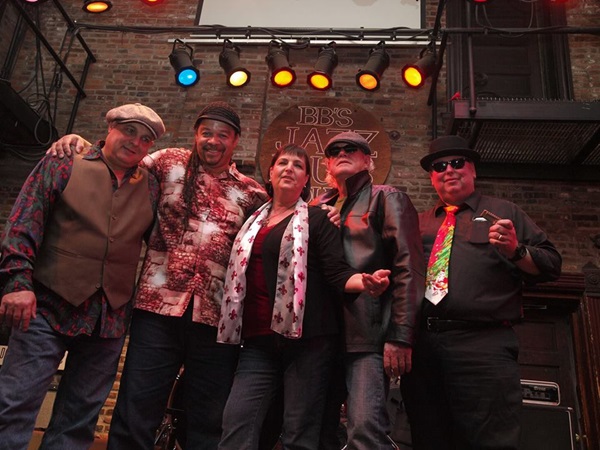
Bill Edwards
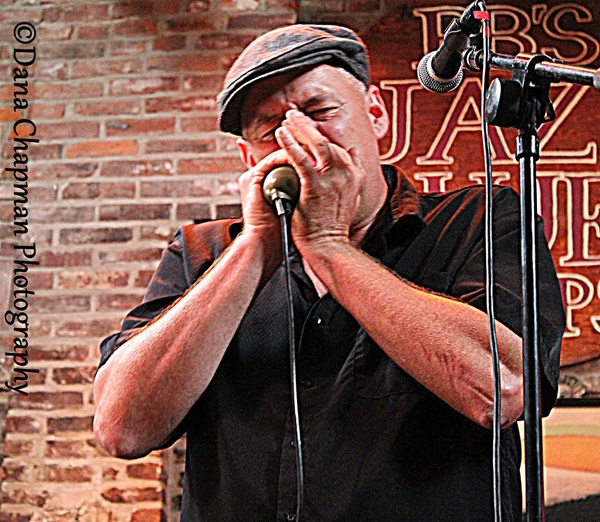
Bill Edwards grew up in a Georgia home in the 70’s where there was a record collection of 45’s from Bo Diddly, Little Richard and Elvis and country stations on the radio playing Jimmy Reed and Chuck Berry. He got his first guitar at 12 but he was always drumming on stuff. It came naturally.
Working his way through college Bill used music as a release for any tough times. He learned acoustic guitar while drumming for a blues rock band. Hearing Muddy Waters for the first time “was life changing … I immediately went out and bought a Hohner Marine Band harmonica.” He had a natural ability and soon realized “I was a drummer with a harmonica problem.”
Edwards wanted to play harp but drums paid the bills. His band, The Urban Shake Dancers, toured with The Black Crows. Their breakthrough never happened and eventually the music took a back seat to career until the Great Recession led to a move to his wife’s hometown. The harp came back out “to keep busy and keep the blues away.” He also changed careers and began working as a teacher.
In St. louis Edwards found “a blues town where people know what they expect to hear. They have high standards because there is so much good music here.” He raised his and credits Eric McSpadden with helping teach him how to have a stage presence and encouraging him to play.
He remains impressed: “there are so many good harp players here … they have melodic lines and know how to hear different tones and scale.” More than that loves that “St. Louis likes to entertain people … there’s a culture of people here, it’s like a fabric, one big blues band where folks sit in and play with each other.”
Look for Bill Edwards around town playing duets with Jon Erblich and gigging in different combinations.
Jon Erblich
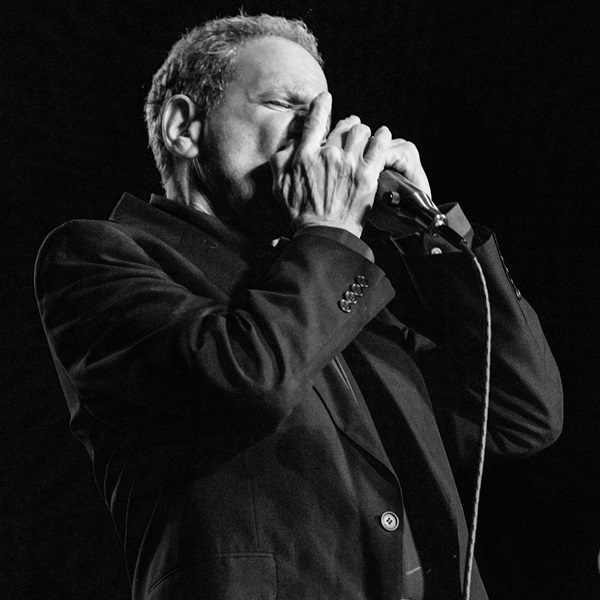
Hearing Muddy Waters and Jerry Portnoy at the 1974 New Orleans Jazz Fest turned Jon Erblich on to the harmonica. In St. Louis, he found a teacher when he heard Tom “Papa” Ray playing with Silver Cloud at Calico’s. They made a deal – he sold Tom’s records at the Soulard Farmers Market for lessons and free albums.
St. Louis harp legend Keith Doder also became a mentor. He schooled Jon in Little Walter, Sonny Boy Williamson II, James Cotton, Lee Oskar and his own style that Jon says was “very funky and brilliant on chromatics.” Ray and Doder pushed Jon to play and he joined them in playing clubs all over town gaining the respect of black and white audiences and musicians alike.
Erblich would go on to play with Tommy Bankhead, Larry Griffin, The Rockin Luckies, Clayton Love and for the last 15 years with Jeremy Segel Moss and the Bottoms Up Blues Gang. His Hohner Crossovers and Golden Melodies have shared the stage with blues royalty: “I got to back up Johnny Johnson and Chuck Berry and open for Albert Collins and John Lee Hooker.” That’s why Eric McSpadden gave him the moniker “Johnnie Diamond.”
While Jon “can still hear Doder in his playing,” he says his earlier “study and replicate method has changed.” The BUBG collaboration has led to “more jazz type lines and shifting to a wet (Kim Wilson) type of sound.” He is encouraged by younger players like Jason Ricci who seem inclined to take more risks.
Jon loves being part a part of the St. Louis harp community and wants the world to know how good it is. He says it “is nothing like other competitive bigger cities” describing it “as a big circle of people that all get along, everyone doing their own thing with impunity, while sharing and learning from each other.”
Look for Jon playing around town, like at the Venice Café on Tuesday nights.
Chuck Loeb

Playing in bands started in grade school for Chuck Loeb. Back then trombone was his instrument. During summer break in ’68 he bought $3 harmonica because “it was cheap, fit in your pocket and you could walk around with something to play.” Then he heard Paul Butterfield and his next band was The Miff Mole Blues Band.
Loeb ended up in St. Louis in the early 70’s but life, marriage, a child and work, intervened with his playing for nearly 20 years. He picked up his harps again in the early 90’s, began jamming at Off Broadway and eventually landing a gig with Dutch Schultz and the Untouchables. His own band, Chuck Loeb and the Blues Haulers, followed and he currently plays with Marty D. Spikener’s On Call Band.
Loeb says he learned by listening to British invasion bands like John Mayall with Duster Bennet, Little Walter and James Cotton. He says uses his Oscar Lee and Suzuki Manji harmonicas “in a Paul Butterfield or James Harmon style.” Defining the St. Louis style “is hard,” he says, “because here the guitar is usually the lead.”
Chuck admires local players like Eric McSpadden and Jon Erblich for their talent and friendship. He smiles when he says, “Keith Doder used to piss me off because he was always better than me but what a sweet guy.” It’s a talent pool “so deep,” he says, “that in any other city I’m first tier but in St. Louis I’m 2nd tier.”
Chuck thinks St. Louis has the greatest blues scene anywhere with music 7 nights a week with good quality players. The harp community is special to him because they are “sweethearts …. I can’t think of a player in town who isn’t easily approachable and willing to reveal their secrets.”
You can hear Chuck playing with Marty Spikener’s On Call Band and on their track “Crawlin Back” on the STL Blues Society 16 In 16 CD.
Jim McClaren
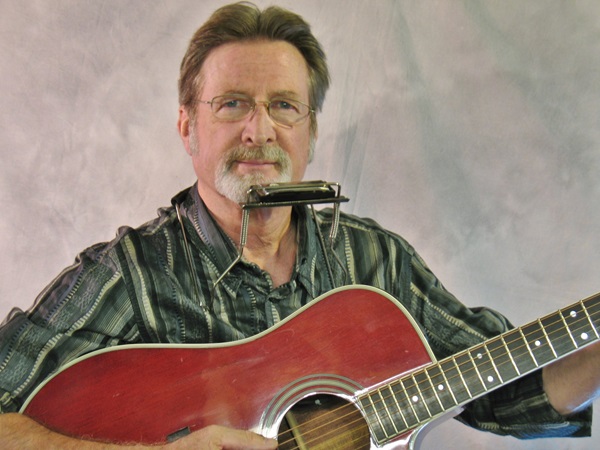
In grade school Jim McClaren was all about classical music until a friend bought a Beatles album. Cream’s Disraeli Gears focused him on the song writers and set him on a blues path. Buying Muddy Water’s Fathers and Sons and hearing Paul Butterfield’s harp simply “tore me up,” he says, “it made me say I gotta play.
Initially, McClaren was self-taught and didn’t use records: “I didn’t know Little Walter and the typical Chicago licks.” He played for himself while working in his father’s bowling alley. One night at work, while humming a Jack Bruce tune, he thought, “I can play this,” and did it. He began studying solo’s and remembers “the day I learned to bend a note was the day I decided to do this.” He loves the harp’s “bent notes and hunks of chords that sing, cry, and laugh.”
McClaren, like many others, cites Keith Doder as a big influence: “He had this deep tone sound I wanted.” So was Art Dwyer who recruited him for The Soulard Blues Band and the start of a beautiful 23-year gig. Locally, he admires Jon Erblich’s sound and Sandy Weltman’s technical virtuosity, “no one can touch him,” he says. And, he credits the years of Harp Attacks founded by Dr. Dave Foley and Tom Ray in 1986 for improving everyone’s quality.
Jim’s Hohner Marine Band and Special 20’s have created some sweet memories. A Summerfest in Germany and the resulting “Live in Stuttgart” cd is one. Having Chuck Berry tell him, “take a solo,” while sitting in at a UAW holiday party is another. He hopes to create a new one with his 2017 Little Walter birthday show.
McClaren says there is a St. Louis harmonica sound: “It is a full bodied tone with little distortion.” He is proud that his community “has a higher quality of players here per cap than any town in the world and they are always getting better.”
Look for Jim ‘Ribtip” McClaren playing with the St. Louis Social Club at BB’s on Tuesdays and the duo Ribtip and Rodgers at CJ Muggs.
Eric McSpadden
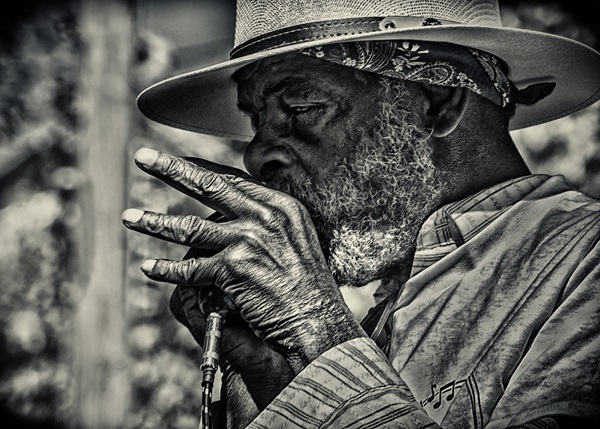
There’s always been music in Eric McSpadden’s head. It’s been that way since he was a kid in Decatur. He played trumpet in school and soul bands, sang in the glee club and church choir and he loved rock. His big natural bass voice led to training in light opera but it was a harmonica boogie that captured his soul.
When McSpadden heard Alan Wilson’s playing with Canned Heat in 1970 at the Incident at Kickapoo Creek Rock Festival in Heyworth IL, “that was it,” he says, “I wanted to play harp.” He bought one and started listening to the greats. But, the Chicago tongue blocking style eluded him and he became “more of a riffer like Lee Oskar” and found that “he thinks more like a horn player than traditional blues.”
In 1979 his cousin, Gary Craft, one of the originals in the Soulard Blues Band invited him to visit. “I came for the weekend and stayed seven months,” Eric admits, “and played in the Monday night jams.” It was the start of a musical career that would include his own band, Mojo Syndrome, Clayton Love, Rough Grooves, Crying Shame, piano bars and a who’s who of STL musicians.
Eric carries special memories of Oliver Sain because of “the way he played and conducted” and times with Bennie Smith and James Crutchfield at the Venice Cafe’. He remembers one special night when he sat in with Rory Block: “I was excited but also terrified because of her nontraditional style.”
McSpadden says the STL harp community “is open and welcoming.” He says we are blessed “with all kinds of genres and players from jazz and blues to jam bands, country and the Grateful Dead.” He promises to play his Hohner Big River and Special 20’ “as much as I can as long as I hold up.”
Look for Eric playing w Larry Griffin (various venues), Margaret Bianchetta (Wed-Hammerstones), and Tuesdays at the Venice Café.
Tom 'Papa' Ray
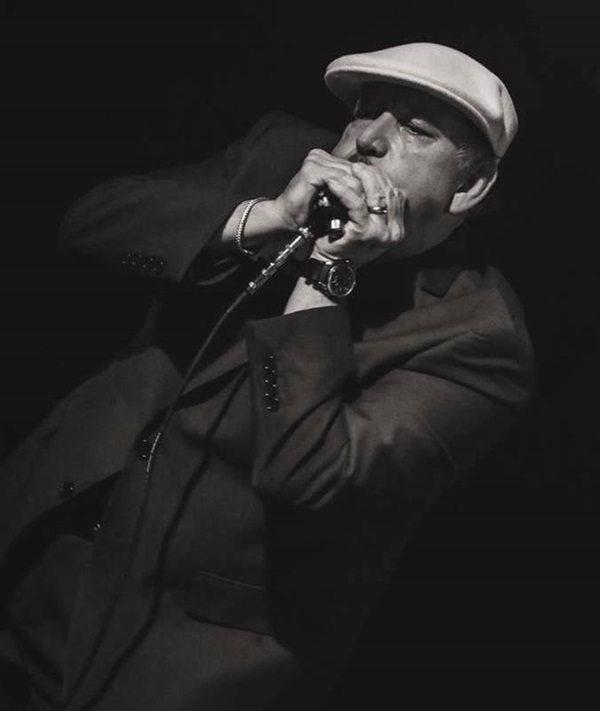
Growing up in a northeast Florida home with his father’s honky-tonk and country record collection fed Tom Ray’s obsession with music that began when he was five. He lived in a land where James Brown was a god and New Orleans top 40 stations played Slim Harpo. By fourteen the had his first harp and played along to records drawn from a deep well of rhythm music, blues and soul.
Ray would occasionally sit in with a popular regional band, Lynyrd Skynyrd, before moving to St. Louis in 1971. Moving here meant “I could see and get the music of people I had heard of – Chuck Berry, Albert King, Fontella Bass.” He played his first gig at Old Duffs and within a year he was sitting in with Tom Maloney. It was the start of a career that includes hard core country, playing sax with Riot Act, world travels, Silver Cloud, Oliver Sain, George Brock and much more.
Tom says his style isn’t unique but admits “I have a broad palette that includes reggae and Afro-Cuban music.” He says he is “influenced by saxophone players and the phrasing of Miles Davis” Today he uses fewer notes on his Hohners and Lee Oskars to tell a story: “learning that you sacrifice tone for execution and what you don’t play is important was a big insight for me.”
Some of his favorite local players include Jon Erblich, Keith Doder, and Arthur Williams. Hearing latter for the first time he says, “made me quit playing for three weeks … he was so good I despaired,” He takes pride in the Harp Attacks he started with Dr. Dave Foley and Jimmy Miller but says “it was like herding cats.”
To Ray the harp is “a sonic glue that fits in the context of a band or song” and he intends to “continue to enjoy the blessing of playing music with musicians you admire.” And, there’s lots to admire, according to Tom: “People are as good here as befits a city that is one of the great mythical foundations of American music.”
Catch Tom playing with Jeremiah Johnson every 3rd Saturday at Beale on Broadway and on his own song “St. Louis Gunshot Blues” on the 16 In 16 cd
Chris Taylor

When your family has singers, Lightnin’ Hopkins guitar players, a Roosevelt Sykes piano playing uncle and a harp playing uncle, “who could really blow,” it was only natural for Chris Taylor to buy a Marine Band harmonica. His uncle never taught him to blow but Sonny Boy Williamson II albums did. When he could play his version of “The Sky is Crying” he was hooked.
While Taylor was mostly self-taught in the 80’s he was also surrounded by masters like George Brock, Arthur Williams and Keith Doder. “Keith was very sharing,” he says, “he would identify your weaknesses and show you what he knew.” Chris says his style has “a bit of Sonny Boy, Little Walter and Lee Oskar.”
Doder and his “Blue City Band” also gave Taylor his first stage appearance. He would practice by going to shows and playing along in the audience until one night Doder said, “you get up here,” and Chris played Slim Harpo’s “Scratch My Back.” his Marine Band harp. Getting on stage, playing in Harp Attacks and a 2000 Battle of the Blues with Big George Brock rank among his favorite memories.
Over the past two decades he has played extensively with “Skeet Rogers and the Inner City Blues Band” and his own “Chris Taylor and the Blues Crushers” with his drummer brother, Will. His local favorite players include Doder, Jim McClaren and Eric McSpadden. He is encouraged by younger rock raised harp players who he says, “even though they play too fast, they attract new fans.”
Taylor says the St. Louis harp community is a good one where “people learn from each other and pass it along” and he credits the STL Blues Society for the exposure it provides. He wants the world to “to come here and listen to a town loaded with versatile harp players.”
To see Chris check The Inner City Blues Band schedule at the Blues Society or at STLBlues.net. You can also hear him on “I Wonder” on the 16 In 16 cd.
Sandy Weltman
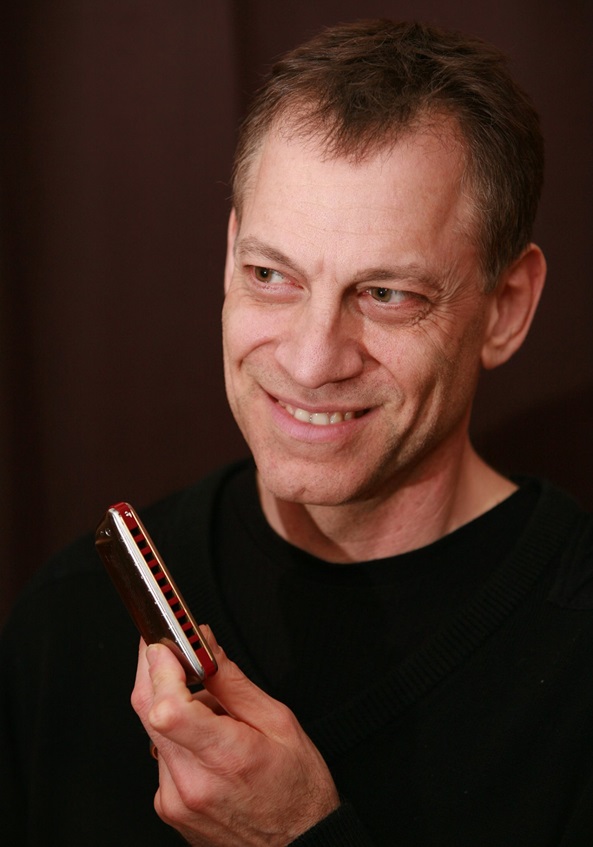
At 14 Sandy Weltman loved folk and bluegrass and bought a banjo to impress a girl. Lessons, a mandolin, bass a guitar and ukulele and many genres of music followed. He was all about strings and “learning different music language and styles” into his 30’s, he says, “until a harp solo on the radio grabbed me.”
Sandy tracked down that Trapezoid song, soloist Howard Levy and a West Virginia workshop he was holding. He went there. Levy’s overblowing technique – hitting all 32 harmonica notes – was how he learned to play. They became friends who shared a “love of the tambour and how it sounds in different genre’s.”
Weltman dove in, achieving a technical mastery on his customized Marine Band and Golden Melodies acknowledged by every local player. A fan of Sonny Terry, Paul Butterfield and Little Walter, he laughs when asked about his style and says “as soon as I find out I’ll let you know.” He loves “how the harmonica emotes” in all his genres from blues, bluegrass and jazz to klezmer, Iranian and spirituals.
His local favorites include Keith Doder who gave him lessons, Jim McClaren, Jon Erblich’s “musical spirit” and Eric McSpadden’s “big sound tone.” He sees Jason Ricci’s overblowing techniques “taking this fabulous way in blues.” Weltman also works to encourage new players through kids programs like the Springboard Harmonica School, the Sheldon Concert Hall series and online training videos.
Sandy sees the St. Louis harmonica community “as a blues hub with more of a Chicago style influenced by Little Walter and Keith Doder.” He says it’s the real deal “a place that loves and supports the blues … it’s thriving and I’m proud to live in a community that take this instrument seriously.”
Check out Sandy Weltman’s new CD “Cigar Box Hymns” or live with The Carolbeth True Trio, Hot Club Caravan, Farshid Etniko, New World Harmonica Jazz.
Howard Young
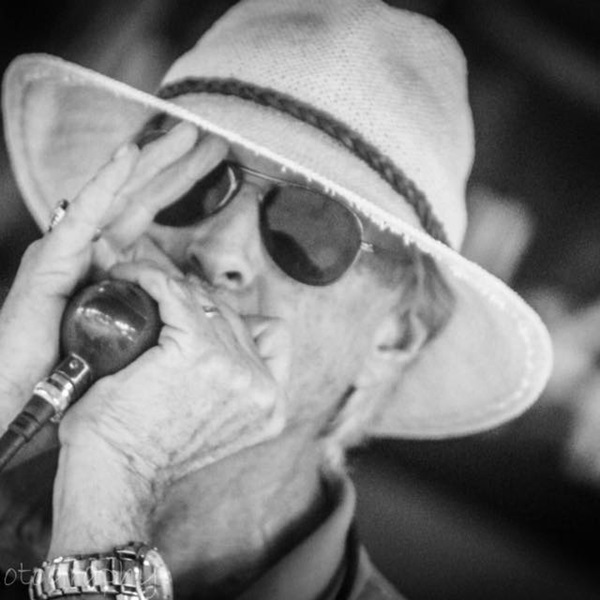
The flute was Howard Young’s instrument until he heard two guitars and a harmonica in 1967 in a college coffee house. When he heard that harp, “it was the sound and feeling,” he says, “I knew I wanted to play music from emotion not just paper.” A ‘C’ harp and Tony ‘Little Sun’ Glover’s guide fixed that problem.
Two years later Young was practicing in a Mizzou echo chamber stairwell when another guy showed up with a bottleneck guitar. Three weeks later they were appearing in local coffee shops. Howard learned “from the bottleneck play, practicing guitar riffs and the music of Paul Butterfield, John Mayall and Charlie Musselwhite.” Sonny Boy and Sonny Terry bargain bin records pitched in too.
Life and work led to a 20-year break from music until a friend heard him playing at a 1995 company picnic and recruited him to a Mike and Mins jam session. The harps came out and he later began playing with bands like The Melissa Neals Band and Rob Garland and the Blue Monks. One of his fondest memories was the night Victor Wooten asked him to sit in with Bela Fleck and the Flecktones.
Young says he “never paid much attention to what his style is although people tell him it’s smooth.” He “keeps it simple” while using his Bushmen harps to play all kinds of music. He says, “I am an accompanist… you don’t overdo it, you play your part in the band.” He also admires players like Sandy Weltman for his “mastery of the instrument” and “the lines and feelings in Jim McClaren’s playing.”
Howard says he had no idea when he started “about the connections and good people I would meet.” He says St. Louis “is a marvelous blues music scene with an inviting inclusive harmonica community where we all know each other and you are always invited to join in.”
See Howard at the Highway 61 Roadhouse Tuesday jam or with these bands: Pocketchange Blues Band , The Bedlam Brothers, and BagLunch Blues Band
Music journalist Bob Baugh
